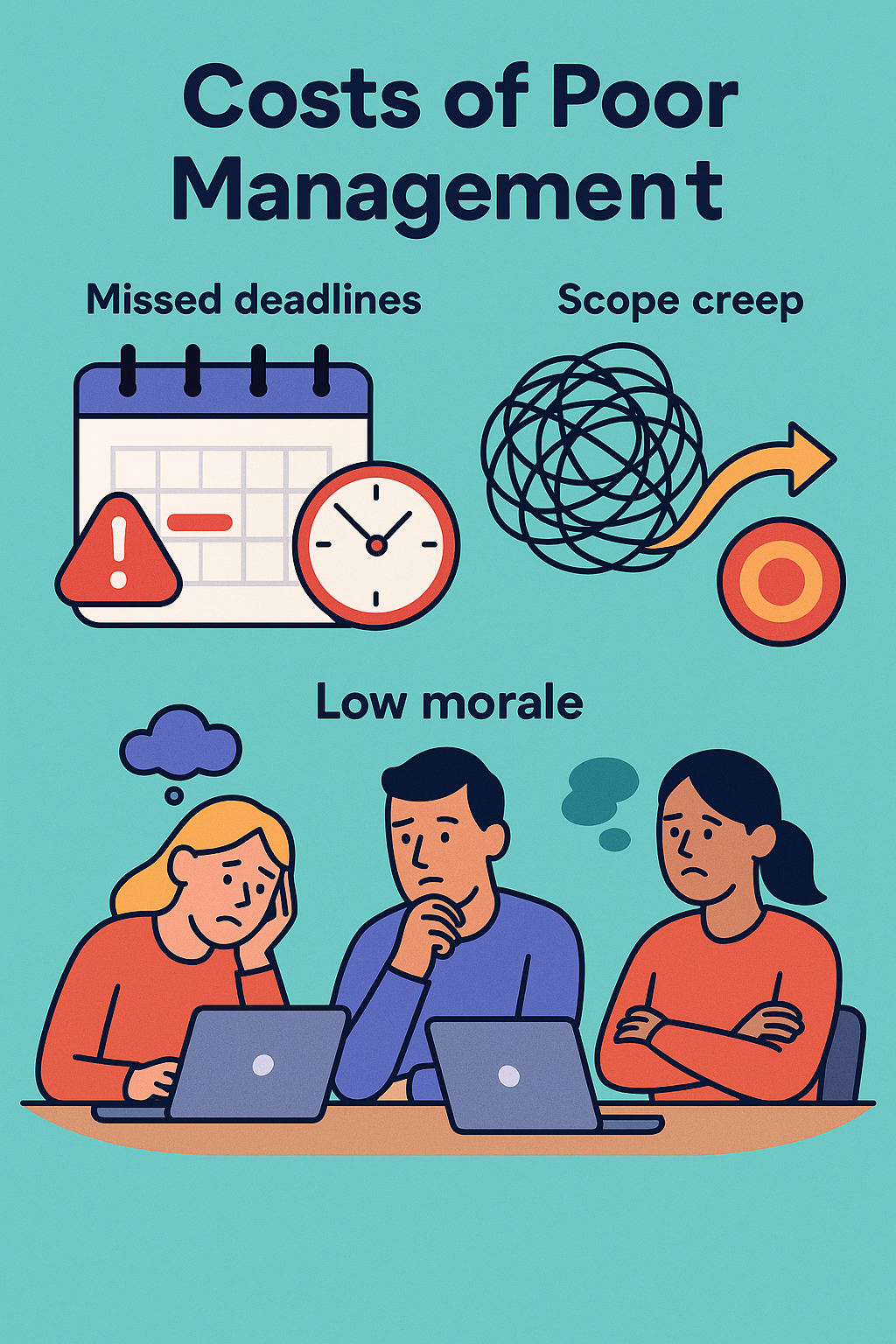You don’t need a Gantt chart to know when a project’s gone sideways. Deadlines get missed, people stop making eye contact in Zoom calls, and the Slack channels turn into a graveyard of half-baked updates and emoji reactions.
But here’s the real problem: it’s not the visible chaos that kills a project — it’s the quiet, expensive kind.
The Visible vs. the Hidden Costs
We all see missed deadlines. They’re loud. Obvious. Usually come with a slide deck and some light panic.
But lurking behind those late launches are the real killers:
- Scope confusion – because “we thought we were building a dashboard” somehow turned into “we’re now a data platform?”
- Decision paralysis – five meetings, no decisions, and now we’re doing stakeholder therapy.
- Rework – when devs are building it for the third time because someone moved the goalpost again.
These don’t hit the burn chart, but they drain morale and money fast.
Where the Money Really Leaks
Spoiler: It’s not just blown budgets. It’s opportunity cost, focus dilution, and a leadership team trying to project manage in their spare time.
- Low productivity – Unclear roles mean people either overstep or sit on their hands. Nobody wins.
- Leadership chasing status updates – If your Head of Product is building spreadsheets to track tasks, congratulations: you’ve outsourced project management to your most expensive resource.
- Wasted dev/design hours – When direction is vague, people do “busy” work. That shiny UI? Built on wrong assumptions.
The Human Toll
Not everything can be fixed with a retro. Mismanaged projects leave a trail:
- Morale nosedives – Everyone knows it’s a mess, but no one’s authorized to fix it.
- Attrition creeps in – Top performers will quietly exit stage left.
- Silos form fast – When alignment fails, teams stop collaborating and start hoarding information like it's post-apocalyptic barter currency.
Prevent It with Actual PM Practices
You don’t need a PMO. You need some damn structure.
- Scope control – Define the thing. Lock it. Change it only when necessary, not weekly.
- Risk management – Flag the “what-ifs” before they become “oh-no’s.”
- Ownership and cadence – Someone needs to drive. And no, “we’ll sync ad hoc” is not a cadence.
